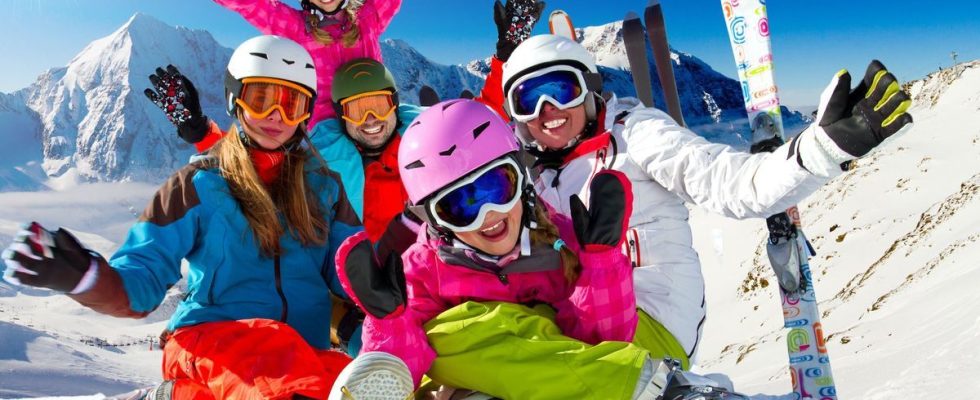Published on
Updated
Reading 3 min.
Are you going to winter sports during these February holidays? To avoid disappointments or accidents that could spoil your vacation, the website of the Ministry of Sports and the Olympic and Paralympic Games has launched a review of all the advice to apply for your safety. Let’s do a check in.
We love the mountains, especially when they are covered in snow. But winter sports are not without risk and getting started in the hobby of assembly should not be improvised. This is why this month of February, the Ministry of Sports and the Olympic and Paralympic Games is renewing its campaign with a whole series of prevention videos dedicated to safety on the slopes.so that the mountains in winter remain a pleasure”! Here’s what you need to remember.
Before hitting the slopes: prepare yourself!
No good ski vacation without preparation. This means arriving in good shape on the slopes, thanks to good physical condition. But that’s not all.
- Get informed : Check the weather forecast every day in your ski resort or from the ski patrollers. Study the slope map and consult the opening and closing signs for slopes and ski lifts;
- Hydrate and eat : With the cold, the altitude and the effort, you consume more calories;
- Warm up : Mountain activities are physical exercises. Without warming up, you risk injuring yourself and ruining your stay;
- Have your equipment maintained. Adjusting the bindings is essential: you will thus limit the risk of spraining the knee in the event of a fall…;
- Protect yourself from the sun : wear protective glasses and sunscreen;
- Check your insurance. If you are not well insured, do what is necessary. Rescue services in ski areas generally require payment.
On the slopes: control your speed
The slopes are a public place where accidents are possible.
- Pay attention to other skiers. Do not obstruct the skiers below you with your trajectories. They don’t always see you coming. It’s up to you to anticipate;
- Master your speed : Adapt it to your technical and physical abilities, traffic, visibility, difficulty of the track and the state of the snow. Slow down especially when crossing beginner areas;
- Stand at the side of the track when you stop. Avoid parking in narrow passages or behind bumps;
- Listen to the professionals and respect the signs. For your safety, the trails are marked with specific markings and signage. Respect them and, if necessary, obtain information from professional trackers-rescuers and device operators;
- Respect people with disabilities. Certain maneuvers may be more difficult to perform on handiskis, be careful not to disturb the riders.
Ski lifts: be vigilant to avoid an accident
On the ski lifts you have to stay focused, says the government website:
- Get ready to board! If you are not careful, you risk becoming unbalanced and falling. In case of bad boarding, let go immediately! Otherwise you risk falling from a height;
- Be vigilant towards other passengers, in particular children;
- When disembarking, keep your skis parallel and remain vigilant. Move away to clear the area;
- On the ski lifts, do not slalom on the uphill slope : You risk derailing the cable and injuring yourself. Quickly clear the finish, the next pole could hit you.
Tempted to go off-piste? Vigilance above all
Only open slopes are demarcated, secured and controlled. Outside of these spaces, you operate at your own risk.
- Find out about avalanche risks. Take into account the pictograms and weather reports displayed at the busiest crossing points of the station;
- Establish an itinerary adapted to your level. Find out about the chosen route before taking it. Do not overestimate your physical abilities;
- Give up if conditions are uncertain;
- Never go off-piste alone. Indicate your route and your expected return time. Do not hesitate to call on professionals;
- Don’t follow any trail. A trace is absolutely not a guarantee of security, does not protect you from avalanches and can take you to dangerous places;
- Be localizable. Equip yourself with an avalanche victim detector (AVD), a transceiver device that must be worn under the outer clothing layer.
In the event of an accident, whatever the slope or practice, protect the victim, alert the slope service or 112 and provide assistance. When calling for help, give as much information as possible about the victim and their location.
Other advice on freestyle, snowshoes or ski touring can be seen in the documents from the Ministry of Sports.
